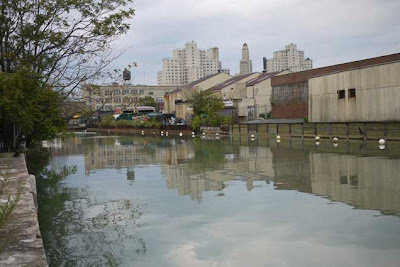The Gowanus canal in Brooklyn is an interesting site of future ecological cleanup and urban development. Like in many other places in Brooklyn you can sense the upcoming getrification and follow the ongoing construction processes. As the Gowanus canal has recently become a superfund site, there is lots of activity going on. For projects and activities along the Gowanus canal see also the site of the Gowanus Canal Community Development Corporation.
This will be the first entry of an exploration into this area. I was cycling there yesterday and got some impression about the urban fabric along the canal between 3rd street and butler street.
This will be the first entry of an exploration into this area. I was cycling there yesterday and got some impression about the urban fabric along the canal between 3rd street and butler street.






















































